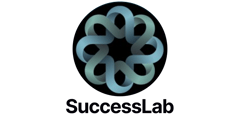The first-ever CSS Advisory Board meeting, hosted at BCG’s Digital Center in Mountain View, CA, convened an incredible group of Customer Service and Support (CSS) leaders from some of the world’s most innovative companies across technology, SaaS, cybersecurity, manufacturing, and financial services. For many, it was a first-time, in-person meeting; for others, it was a long-overdue reunion of peers who’ve collaborated over the years.
What united everyone was a shared sense of purpose—and the recognition that we’re all tackling similar challenges from different angles and contexts. This was more than a meeting; it was the beginning of a community.
A Shared Mission for the Future of CSS
Though participants came from diverse industries and operating models, the group quickly aligned on a bold, forward-looking mission to transform CSS into a proactive, business-driving function by:
- Innovating support through AI and automation
- Reinventing the customer journey with personalized, seamless engagement
- Embedding support insights into product development and roadmap decisions
- Aligning CSS with growth goals and commercialization of support services
- Empowering our people with the mindset and capabilities for strategic success
That last point was emphasized with strong consensus: while AI and automation are transforming our operations, people remain the pillar of strength in support. Human connection, expertise, and adaptability will continue to be critical. As one leader noted, empowering teams to evolve, lead, and thrive is as critical as deploying cutting-edge tools.
AI as a Catalyst, Not a Cure-All
AI has moved well beyond experimentation. Participants reflected on the real-world use cases of AI in support—from summarization and auto-suggestions to root cause analysis and next-best actions. These efforts are generating measurable efficiencies. Still, one message came through loud and clear beyond the buzzwords: AI is only the beginning. To deliver sustainable value, technology must be aligned with people, process, and purpose.
BCG’s Simon Bamberger introduced a simple but powerful framework—the 10/20/70 rule: 10% is about the AI model, 20% is about data, and 70% is about operational transformation.
The most significant breakthroughs, attendees agreed, come not from technology alone but from reimagining how we work.
Fast Starts and Strategic Bets
Participants took different paths to exploring generative AI. Some began with low-complexity pilots—like email summarization—to build confidence and early momentum. Others intentionally led with their toughest challenges, seeking to push the limits of what generative AI could accomplish.
For instance, one participant shared how their team first tackled complex home-networking issues—not for speed, but to build a robust, domain-specific training data foundation. This delayed deployment but ultimately accelerated their AI capabilities in the long run.
Another participant described their investment in root cause generators, which reduced time to resolution from days to minutes, unlocking efficiency while elevating human-AI collaboration.
Despite different entry points, the shared learning was clear: Long-term value comes from integrating AI across the entire customer journey—not just for reactive efficiency but to unlock proactive, insight-driven experiences.
Build vs. Buy, Innovation vs. Governance
Some of the most exciting stories came from internal innovation—engineers spinning up prototypes over a weekend or support teams co-developing tools that eventually replaced external vendor spend.
However, such innovation raised new questions: How do we manage shadow AI development? What happens when these creators leave? Where’s the governance?
The group discussed formalizing internal “innovation tracks”—including hackathons, secondments, and citizen development—balanced with clear checkpoints for security, privacy, compliance, and maintainability.
One approach from Microsoft was “Spark Weeks,” immersive engagements in which engineers, product managers, and frontline support reps ideate and prototype together, then transition successful concepts into secure, governed production.
This balance between speed and stewardship emerged as a key principle for any organization embracing AI at scale.
From Cost Center to Growth Driver
One of the most energizing conversations focused on evolving CSS from a cost center to a strategic growth engine.
AI is opening the door to new monetization opportunities—from increased product adoption and upsell enablement to real-time, AI-informed customer conversations. Participants shared early examples of:
- AI chatbots that made product recommendations, leading to unexpected direct sales
- Support-led insights that drove upsell opportunities and increased product adoption
- Usage data mining that identified churn risks or new service opportunities
- Support engineers as trusted advisors, uncovering latent customer needs
While monetization paths vary by business model and maturity, there was a clear alignment on one point: CSS generates high-value data that fuels retention, expansion, and product innovation. And with the right insights and access, CSS leaders can influence core growth outcomes.
Empowering People for What’s Next
Perhaps the most passionate dialogue was about the human side of transformation. Leaders reflected on the emotional impact of change, from reskilling to redefining roles to managing layoffs driven by AI efficiency.
One company restructured 20% of its roles while investing in on-the-job learning for the remaining staff. Others created new roles—AI evaluators, knowledge curators, automation architects—recognizing that “we’re not just changing roles—we’re creating new ones.”
A theme emerged: clarity creates confidence. Teams want transparency on what’s changing and what’s next. Many participants are developing new Learning and Development (L&D) programs, career maps, and cultural rituals that reinforce growth mindsets and create safe spaces for experimentation.
Building Community and Continuity
The openness, curiosity, and mutual respect in the room made this inaugural gathering truly special. While some had years of shared history, others were meeting for the first time. Yet everyone shared a passion for redefining what’s possible in CSS.
There was laughter, debates, and shared moments of recognition: we're all navigating this AI wave together.
This is just the beginning of something larger—a community where collaboration, courage, and shared purpose will define the next era of CSS.
As one participant put it, “We’re not just improving support—we’re reimagining it from the ground up.”
Together, we’re not just responding to change—we’re leading it.







